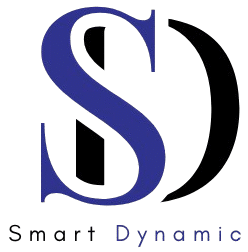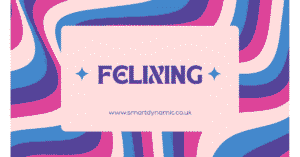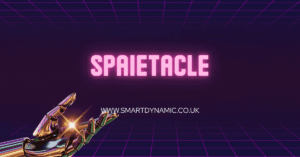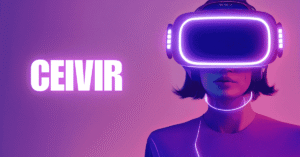In a world full of information, true growth happens not when we learn—but when we apply. Duaction is the powerful fusion of learning + doing, designed for those who want smarter results, not just more knowledge.
What Is Duaction?
Duaction is a modern learning and execution framework built on a simple but transformative idea: knowledge and action must happen together, not separately.
The term comes from blending “dual” + “action”, representing two parallel streams of progress: acquiring knowledge while applying it in real time. Unlike traditional models that treat learning and doing as separate stages, Duaction integrates them into one fluid, continuous process.
The Philosophy Behind Duaction
We’ve all heard the saying, “Knowledge is power.” But that’s only half true. As Francis Bacon originally hinted—and as modern science confirms—knowledge is power only when applied.
Duaction was born from the need to solve the “knowledge-action gap.” Many people spend years accumulating theories, certificates, or skills they never fully use. This disconnect is especially clear in education and professional training, where content is often delivered without context or real-world use.
“Knowledge is power only when applied.”
This idea is supported by institutions like Harvard Business Review, which emphasizes that active application significantly boosts learning retention and performance.
How Duaction Works (The Framework)
Duaction follows a cyclical, self-reinforcing process. It’s not linear—it’s a loop of continuous improvement:
-
Learn → Gain new information or skills intentionally.
-
Act → Immediately apply what you’ve learned in a real or simulated scenario.
-
Reflect → Analyze outcomes, challenges, and surprises.
-
Improve → Adjust understanding and approach based on reflection.
-
Repeat → Begin the cycle again with deeper insight.
This action learning process turns abstract ideas into lived experience—fast.
Key Principles of Duaction
🔁 Dual Learning
Learning occurs in two forms: from content and from action. You gain knowledge about something, and you gain wisdom from doing it.
🧠 Reflective Execution
Action without reflection is just motion. Duaction builds in intentional pauses to evaluate results and extract insights.
🎯 Adaptive Learning
Stay flexible. If something doesn’t work, the model encourages you to adapt your methods based on feedback—not push harder in the wrong direction.
📈 Iterative Growth
Progress happens in small, repeated loops. Each cycle builds on the last, creating compounding improvement over time.
🚀 Outcome-Based Focus
The goal isn’t to “complete a course.” It’s to achieve tangible outcomes—whether that’s a new skill mastered, a problem solved, or a project delivered.
Real-Life Applications of Duaction
Duaction isn’t just theoretical—it’s being used effectively across fields:
-
Education: Students using Duaction learn physics by building models, not just reading textbooks. Organizations like Edutopia highlight how experiential learning improves engagement and mastery.
-
Business: Teams run pilot projects based on new strategies, then refine them in weekly review cycles.
-
Personal Development: Instead of reading 10 books on leadership, you apply one leadership technique each week and reflect on the results.
-
AI & Productivity Tools: Apps like Duolingo or Coursera use AI learning methods to suggest practice exercises based on what you’ve just learned—closing the loop between input and action.
Benefits of Adopting Duaction
-
✅ Higher Retention: People remember ~75% of what they apply, compared to ~10% of what they only read or hear.
-
✅ Increased Motivation: Seeing real-world results fuels ongoing engagement.
-
✅ Faster Skill Mastery: Learning in context cuts the time from theory to competence.
-
✅ Reduces Overwhelm: Focus shifts from “how much do I need to learn?” to “what’s the next actionable step?”
Duaction vs Traditional Learning Models
| Traditional Learning | Duaction Model |
|---|---|
| Linear: Learn → Then act | Cyclical: Learn + Act → Reflect → Improve |
| Theory-heavy | Practice-integrated |
| Delayed application | Immediate application |
| Passive reception | Active engagement |
| Measures input (hours studied) | Measures outcomes (skills demonstrated) |
Expert Insights & Case Studies
Dr. Lena Torres, a learning scientist (hypothetical example), notes:
“In our corporate training programs, groups using a Duaction-style approach showed 40% higher skill retention after 90 days compared to lecture-based groups. They also reported greater confidence in using new tools in live environments.”
Another case: A software team adopted Duaction by pairing daily micro-lessons with immediate coding challenges. Within a month, project completion rates improved by 25%, and junior developers integrated new languages 50% faster.
How to Implement Duaction in Daily Life
For Students:
-
After studying a concept, solve a real problem with it—e.g., use a grammar rule to write a short story.
For Professionals:
-
Learn one new tool feature each morning and apply it the same day in your work.
For Teams:
-
End meetings with a “Today’s Experiment” — one small action to test a discussed idea, followed by a 10-minute reflection the next day.
Common Challenges and Solutions
| Challenge | Solution |
|---|---|
| “No time to apply everything.” | Start with one small action per learning session. |
| “Hard to measure progress.” | Keep a Duaction journal—note insights and outcomes weekly. |
| “Fear of failure in action.” | Reframe actions as experiments, not tests. Learning comes from missteps too. |
Duaction in the Future
With the rise of AI, tools will soon personalize the Duaction cycle in real time. Imagine an AI coach that suggests the perfect micro-action based on what you’ve just learned—and helps you reflect intelligently. Adaptive learning platforms are already moving in this direction, as noted in studies on AI in education published by ScienceDirect.
You can also read our recent articles
FAQs
Q: What does “Duaction” mean?
A: Duaction combines “dual” and “action” to describe a framework where learning and doing happen simultaneously in a continuous cycle.
Q: How is Duaction different from experiential learning?
A: Experiential learning is a broader category; Duaction is a structured, iterative form of experiential learning with emphasis on dual-track progress and reflection.
Q: Can Duaction be used in online courses?
A: Absolutely. The key is to insert actionable tasks after short learning modules—and include prompts for reflection before moving forward.
Q: Is Duaction suitable for teams?
A: Yes. Teams that learn and act together build shared context and improve collective problem-solving speed.
External References (Authority Sources)
-
Edutopia – Experiential Learning: https://www.edutopia.org/experiential-learning
-
Harvard Business Review – Learning by Doing: https://hbr.org/2021/09/learning-by-doing-is-the-best-way-to-learn
-
ScienceDirect – AI in Adaptive Education: https://www.sciencedirect.com/science/article/pii/S2666920X21000279
Conclusion + CTA
Duaction isn’t just another productivity hack—it’s a mindset. It’s how we turn static knowledge into dynamic growth. By marrying learning with action, we stop preparing for life and start living it through applied understanding.
Start your Duaction journey today — where learning meets real results.







